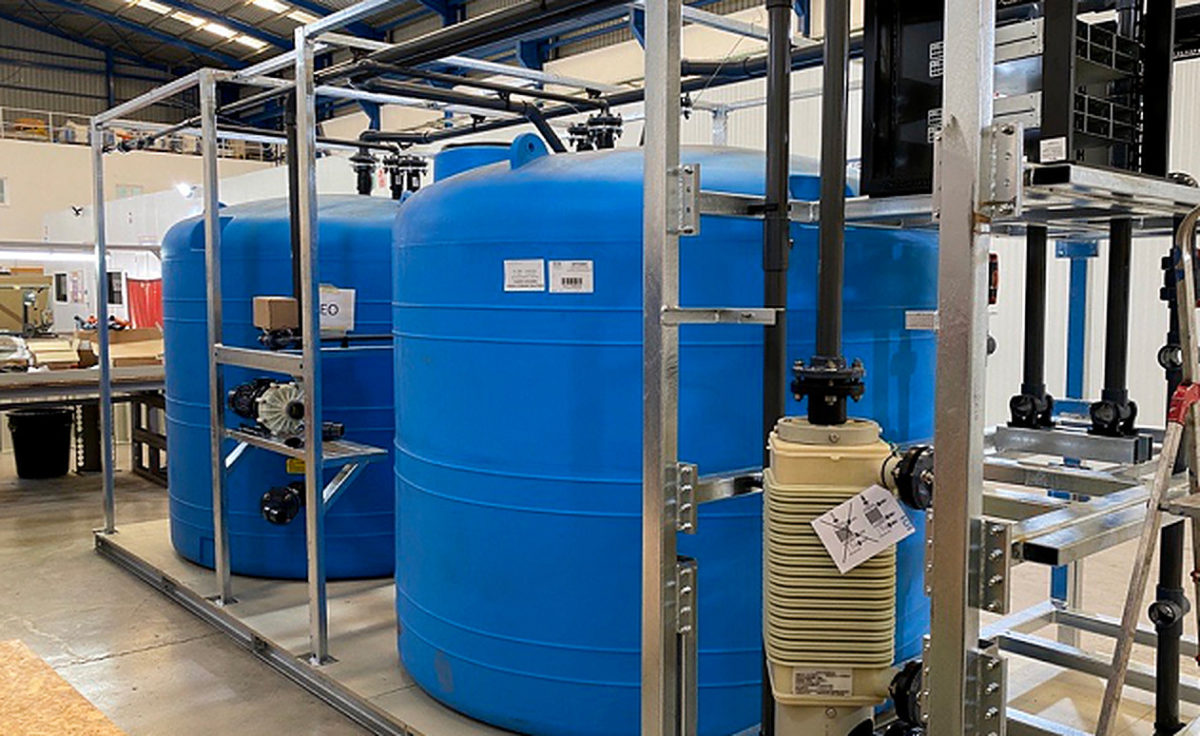From pv magazine Spain
Sacyr Industry, a Spanish engineering services provider, is building a heating system based on PV, geothermal heat pumps and vanadium redox flow batteries at the Moncloa multimodal bus and metro station in Madrid.
The main goal of the demonstrator is the hybridization of geothermal sources with energy storage to create sustainable buildings with practically zero energy dependence on the conventional grid. Spanish battery provider E22 Energy Storage Solutions is participating as the supplier of the redox flow battery technology.
Underground geothermal drilling was conducted at a tunnel of the station's metro line to install heat pumps that produce cold air and heat for a space spanning 41,000 square meters.
“We have drilled 150 meters deep,” said Daniel Muñoz, director of geothermal energy and energy efficiency at Sacyr Industrial. “The height available in that tunnel for the drills is four meters, and a standard small drilling rig is already between seven and nine meters, so the drilling cannot be deeper. In addition, we have to install a larger vent to evacuate the fumes from the drill's motors, which makes the project more expensive compared to a traditional geothermal solution drilling from the surface. But the existence of this tunnel allows us to drill with less disturbance and impact.”
The Moncloa station also houses platforms for Madrid's metro lines. The area is affected by all the heat generated by the subway and buses, and especially by the solar radiation that heats the asphalt on the outer surface, and cooling requires a lot of energy in the summer.
As chillers, the project uses heat pumps that work by producing only cold and dissipating heat into the atmosphere. Currently, they can produce 2MW of cold air, but the goal of the project is to scale the installation up in the future to provide about 1MW of geothermal energy.
“We could obtain 50% of all the energy demand of the station in a renewable way,” said Muñoz. “In addition, we have included some demonstrative vanadium flow batteries. If this works out, in the future we could ensure that all the air conditioning energy consumed by the station is renewable, considering that the system may be powered by photovoltaics. The thermal energy would be used to air-condition and the electricity to activate the compressors of the heat pumps and chillers.”
Muñoz said the demonstrator features two containers.
“The one with the heat pumps that we connect with the wells and thus provide energy in the form of heat and cold. The other, with the batteries that are recharged through a photovoltaic solar installation, is connected to an electrical panel,” he said.
The Spanish consortium claims this is the first project in which geothermal heat pumps have been hybridized with flow batteries. The developers said it could be replicated and made larger in the same facilities, with more drilling and more heat pumps, or heat pumps with greater capacity or cooling capacity.
This content is protected by copyright and may not be reused. If you want to cooperate with us and would like to reuse some of our content, please contact: editors@pv-magazine.com.



By submitting this form you agree to pv magazine using your data for the purposes of publishing your comment.
Your personal data will only be disclosed or otherwise transmitted to third parties for the purposes of spam filtering or if this is necessary for technical maintenance of the website. Any other transfer to third parties will not take place unless this is justified on the basis of applicable data protection regulations or if pv magazine is legally obliged to do so.
You may revoke this consent at any time with effect for the future, in which case your personal data will be deleted immediately. Otherwise, your data will be deleted if pv magazine has processed your request or the purpose of data storage is fulfilled.
Further information on data privacy can be found in our Data Protection Policy.